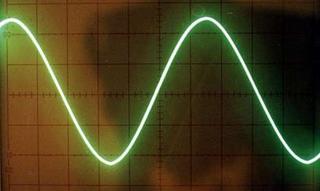 Via Robert Gable's aworks my attention is drawn to Allan Kozinn's account of a recent performance of Terry Riley's In C by the Composer's Collaborative at the Cornelia Street Cafe in NYC. Quoting from Kozinn:
Via Robert Gable's aworks my attention is drawn to Allan Kozinn's account of a recent performance of Terry Riley's In C by the Composer's Collaborative at the Cornelia Street Cafe in NYC. Quoting from Kozinn:"The score, for an ensemble of unspecified size and instrumentation, is built of 53 short figures that all the musicians are to play, though not in unison, with repetitions as the players see fit. There is also usually a repeating C, in octaves, played as a pulse that runs through the work, although this time the ensemble -- billed as the Mighty CCI House Band -- elected to drop it. That decision, though it made the piece sound slightly naked at first, allowed for an extra measure of fluidity in this already free-flowing score."
I've heard several live performances and recordings of In C over the years and those repeating C's (the highest ones on the piano) are seared into my brain. It is hard to imagine the opening major third of that piece without that persistent pulse/drone backing it up. I would love to hear a performance without it. There should be at least a couple of generations of performers fluent in the language of minimalism by now that performing this work without an audible "click track" should become common practice.
Another substantial work in the "minimalist" canon is Music for 18 Musicians by Steve Reich. (I look forward to a definitive Canteloupe release of this work that matches the high quality of the Alarm Will Sound performance of Tehillim, the So Percussion version of Drumming or the Bang on a Can All-Stars take on Riley's In C.) Music for 18 Musicians has a shaker part that plays a steady pulse of eighth notes throughout this 55-minute work and I've
 always been curious to hear this piece without that element cutting across the sonic canvas in such even intervals.
always been curious to hear this piece without that element cutting across the sonic canvas in such even intervals.The steady "pulse" of minimalism is so strong that physically articulating it seems redundant. Not that anyone has ever accused minimalism of redundancy. Taking out the steady-state element would expose a wider range of shades as the ever present pulse would be allowed to become implied at times and enhance the fluidity and harmonic content of these works.


2 comments:
FYI, the shaker doesn't enter "Music for 18 Musicians" until quite some time into the piece (31 minutes and 24 seconds into the 1978 ECM recording by Steve Reich & musicians). Rather, it's the mallet instruments -- primarily two marimbas -- that keep the pulse in the majority of this work.
To my ear, this constant pulse is an integral part of Reich's composition, and I think it would ruin the structure of the work were it eliminated.
Hello Urban Strata. You may be right about the late shaker entrance in "Music for 18 Musicians". I'll have to look into that. Though that's still a good 14 minutes of shaker if it enters at 31 minutes.
The constant pulse is a staple of Reich's sound. And it wouldn't vanish if wasn't explicitly articulated at every iteration either. With "Music for 18 Musicians" in particular I think the harmonic cycle would still carry the structure even if the percussive elements were pulled back or eliminated. It would be an interesting sonic experiment.
Post a Comment